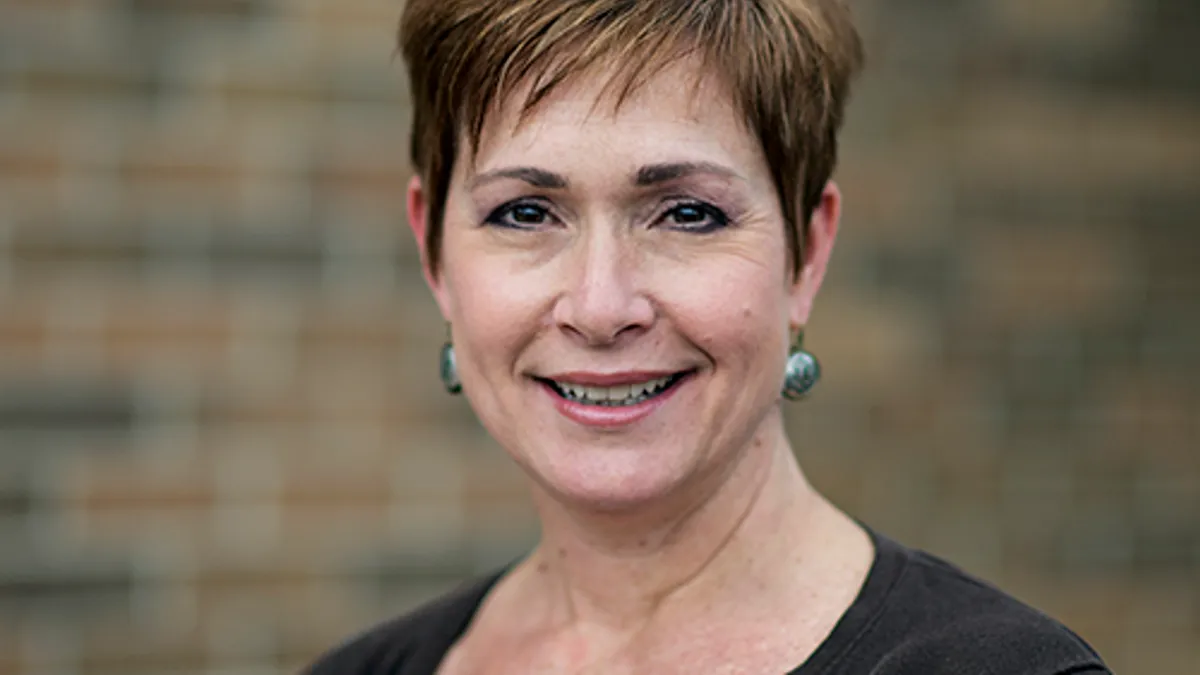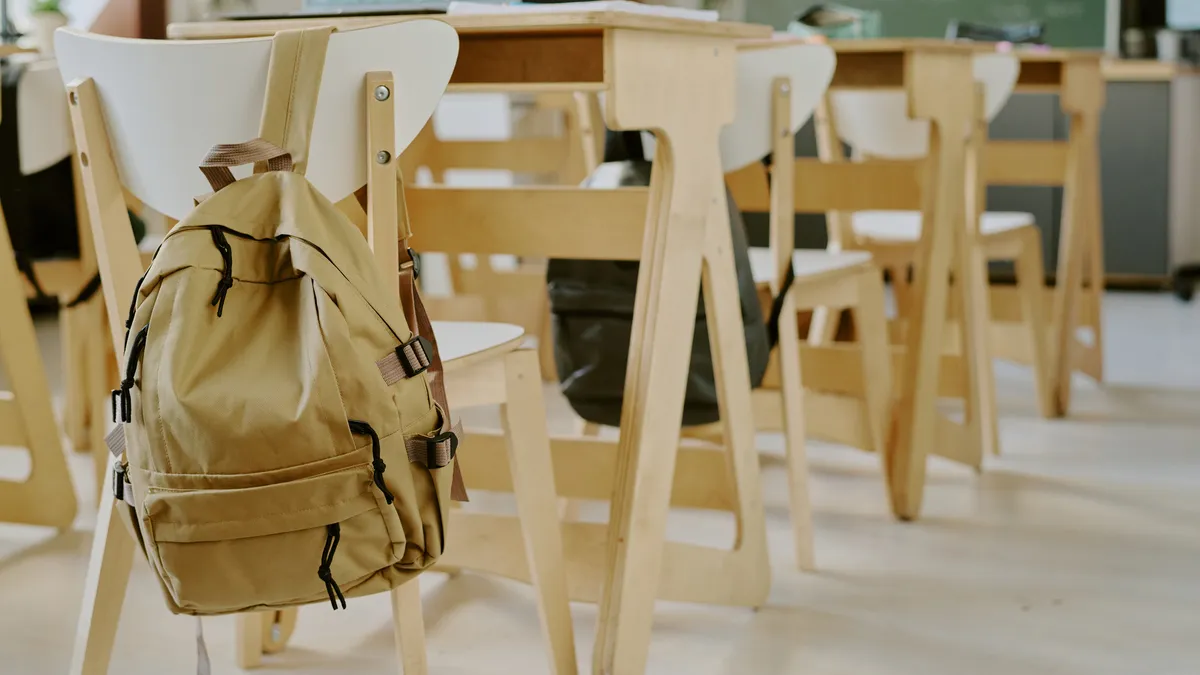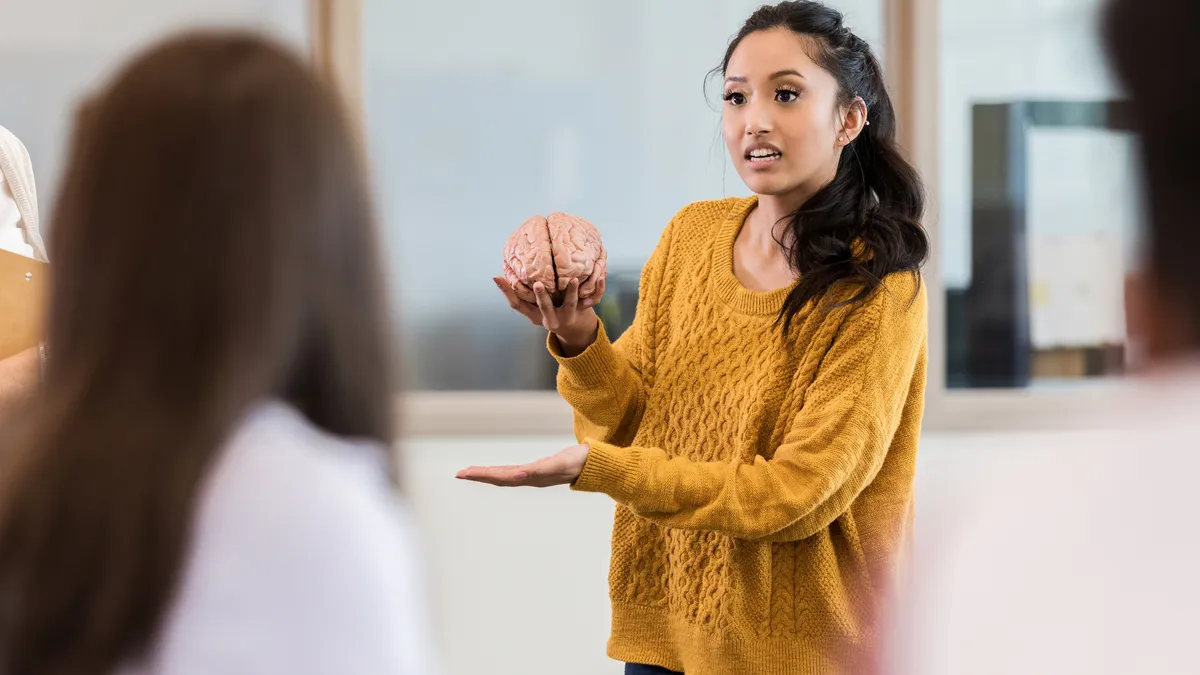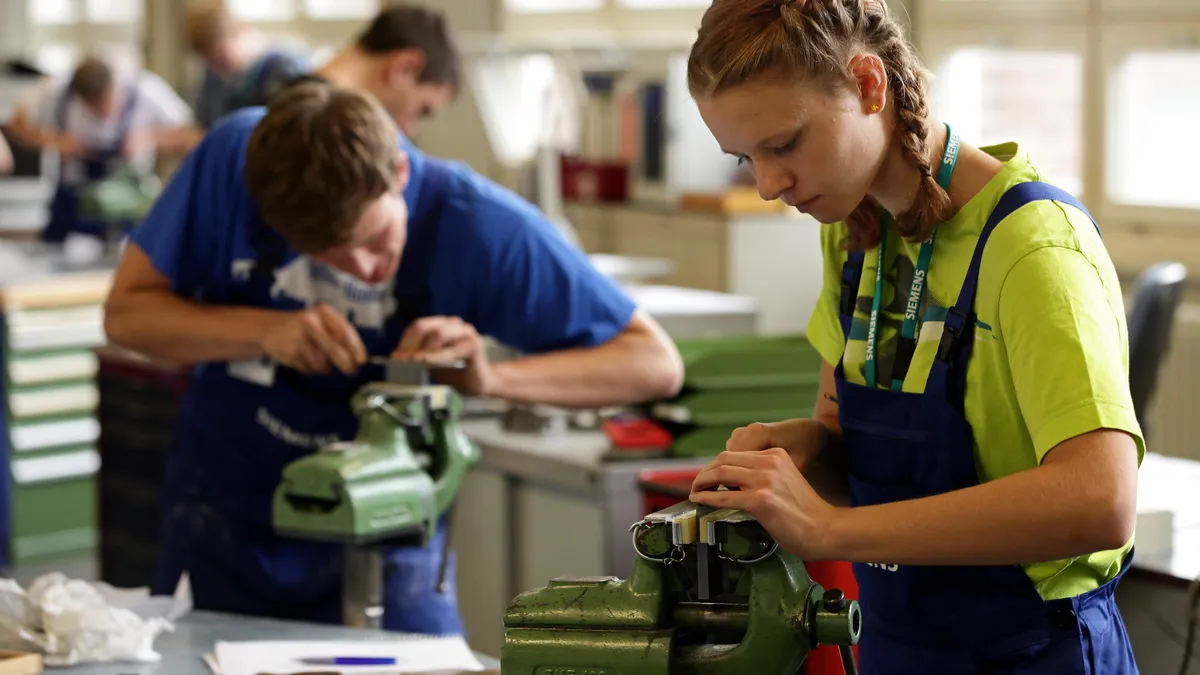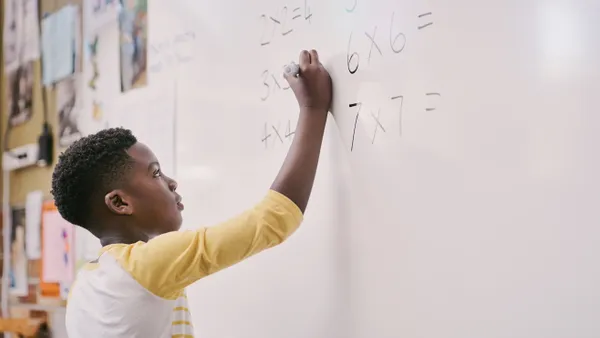While adopting a prepackaged "box" curriculum may be convenient, administrators overseeing curriculum in many districts nationwide will admit it also limits flexibility to varying degrees.
For Maureen McAbee, assistant superintendent of instruction for Community Consolidated School District 59 in Elk Grove Village, Illinois, that could potentially mean the difference in fulfilling the pre-K-8 district's mission of helping students build foundational life skills like collaboration and critical thinking alongside core academic knowledge.
"There's definitely challenges along the way, adjustments along the way — but I think we have approached it from a curriculum development standpoint and making sure our curriculum meets the needs of our students and is really focused on long-term goals in addition to short-term goals," McAbee recently told Education Dive.
One such challenge for the suburban Chicago district this year, of course, has been adjusting for remote and hybrid learning models due to the coronavirus pandemic. Education Dive had a chance to learn more about that, as well as the district's bigger-picture efforts around assessment and resource adoption, over the course of our conversation.
EDITOR'S NOTE: The following interview has been edited for brevity and clarity.
EDUCATION DIVE: When it comes to having students develop skills for success in life, have you all done any experimenting with new assessment models?
Maureen McAbee: That has been the more tricky piece with it. Our assessments in our units are a performance-based task of some sort requiring the student to display or demonstrate the skills of the unit as well as these learner outcomes that is assessed on a rubric.
We can see how the student is growing [but] how they performed doesn't translate as cleanly into a data set like a standardized test would. But it does allow us to look at where is this child falling within problem-solving and then what can we do to get the child to the next level.
So many of those important life skills are more qualitative than quantitative.
McAbee: We're always searching for other assessment models or exemplars that we can look at for that. But the best we have done is really just the rubric and then the evidence — kind of having that success criteria for students clear on both the skills and these districts outcomes, really promoting their own reflection on their performance, and then using the rubric and the evidence to justify that placement on the rubric.
But that is a challenge, though. The assessment pieces are not as neat and tidy and quantitative.
A big challenge a lot of school districts are trying to figure out is how they're going to address expected budget cuts as a result of the pandemic. One of the first areas that tends to get cut in curriculum is the arts and other similar “elective” subjects. What kind of planning have you done so far for this new budget reality in the next few years?
McAbee: That's a great question. We're fortunate in our financial outlook and our situation, but every district is just spending like crazy right now, just on necessities.
I would say the biggest thing we have found so far is the need to have more digital resources that could support the learning and could bridge that remote and in-person scenario. Our instructional model was really reliant on the kids being in-person, so in some ways these district outcomes and habits have been more challenging this year because we're doing things remotely.
And even when we're back in-person, collaboration is a little bit more tricky when you're trying to stay six feet apart or you're on the Zoom screen.
It somewhat takes us away from our vision because of what we need to do for safety, but we're still maintaining the same outcomes and practices. It's just a little bit more challenging to assess and teach to those when we are remote.
We did end up purchasing a number of different digital resources that students could use. By “digital” we mean something that students can use that's going to give them practice opportunities that are at their level for reading and math, primarily. So we had to add those.
What will become a major issue is with most resources like that ... it's an annual subscription. If we paid, for example, $25,000 for the subscription, we now need to build this into the budget if it's something we're going to continue using. So that's the challenge now.
We've been pretty fortunate in that our budget so far has been able to accommodate the purchases with, especially, the CARES funding we received in the spring. But the question will be, “Can we sustain those purchases long term ... while also continuing to evaluate our existing curriculum purchases and supporting resources for other areas?” That will be the challenge.
When it comes to digital resource adoption, one of the things I've heard over the years is that decision makers like you are inundated with shiny and fancy pitches from vendors. But the important thing is figuring out which of these tools are going to really expand how students explore and create in the learning process. How do you determine that when you're selecting a new tool or a resource?
McAbee: What we've used a lot [for that] is our summer program. Again, we're fortunate financially to be able to offer summer learning programs for students. And we use that often as a place where we can try new things, see how they work with our students, and then make recommendations from there.
This summer, we did try out several of those. I will say the ones that we're looking to add are probably not the ones that lend themselves to creativity or innovation as much as others, but that was the gap that we had. We do focus on innovation and creation and collaboration, yet when we're in a remote environment, because we have a blend of synchronous/asynchronous, we need a product that really is more skill-focused to allow kids to continue to practice at their level — which the teacher, when we’re in-person, can do. When we're remote, that becomes more challenging.
But we've had good success with trying things in the summer, including teaching methodologies and curriculum. Teachers, during the school year, take things so seriously and are so committed to their students. They don't feel as free to try new things. But in the summertime, they do feel a little bit more flexibility to try something and really give it their all and to be able to give good feedback on it.
We tried out three different products this summer and ended up going with all of them as additions to our resources for this year.
With all the new resources that you've had to introduce — and just the fact that students and educators are adjusting to learning models none of them had any experience in — what's your approach to professional learning been during this period?
McAbee: We really were fortunate to have five days of professional development in August before our students even started. Some of it was directed, some was self-directed. Some of it was synchronous, some of it asynchronous. But it was some common modules we wanted all teachers to have. For example, “What does a mini-lesson look like in remote learning?”
And then [we were] modeling that with our coaching team. We have a team of instructional coaches, and every building has one to two coaches. Many were leading those sessions. That’s where our summer school teachers also were able to step up and assist, because in our summer school program this year, we created the model we thought we wanted for remote learning this year, if it was needed.
We tried out that model in summer school so we could get feedback on that. How long is too long for a mini-lesson? What are some good synchronous and asynchronous activities?
We brought in those summer school teachers and our instructional coaches to lead the professional development in August because they became our experts. They had a chance to try it out and say, “This is what works for me. This is what didn't work. That was very helpful. The five days was very helpful.”
But it's also a lot. This is a challenge for our staff, so our coaches continue to be instrumental. One thing that was kind of interesting, though, is we've had some staff who are more eager than others to work.
I noticed with remote learning, since it is new for everyone, even those who might not have been eager to work with a coach in the past were eager to work with a coach and get that support. It kind of leveled the playing field. Nobody was an expert at this, really. We're all on the same page. We’re all learning together.
That five-day training also helped us build a districtwide network. We need to collaborate with each other. We had to help each other carry this load together. If every single person is doing this on their own, it's going to be really difficult, but let's come together.
Our coaches typically are at one school. They might be asked to help at another school if it's remote. Maybe they're doing a PD session for their staff and they can allow others across the district to join. So really, [it’s about] trying to connect those dots and expand the staff network beyond just their school to the entire district. That was a huge benefit of the professional development time in August.



